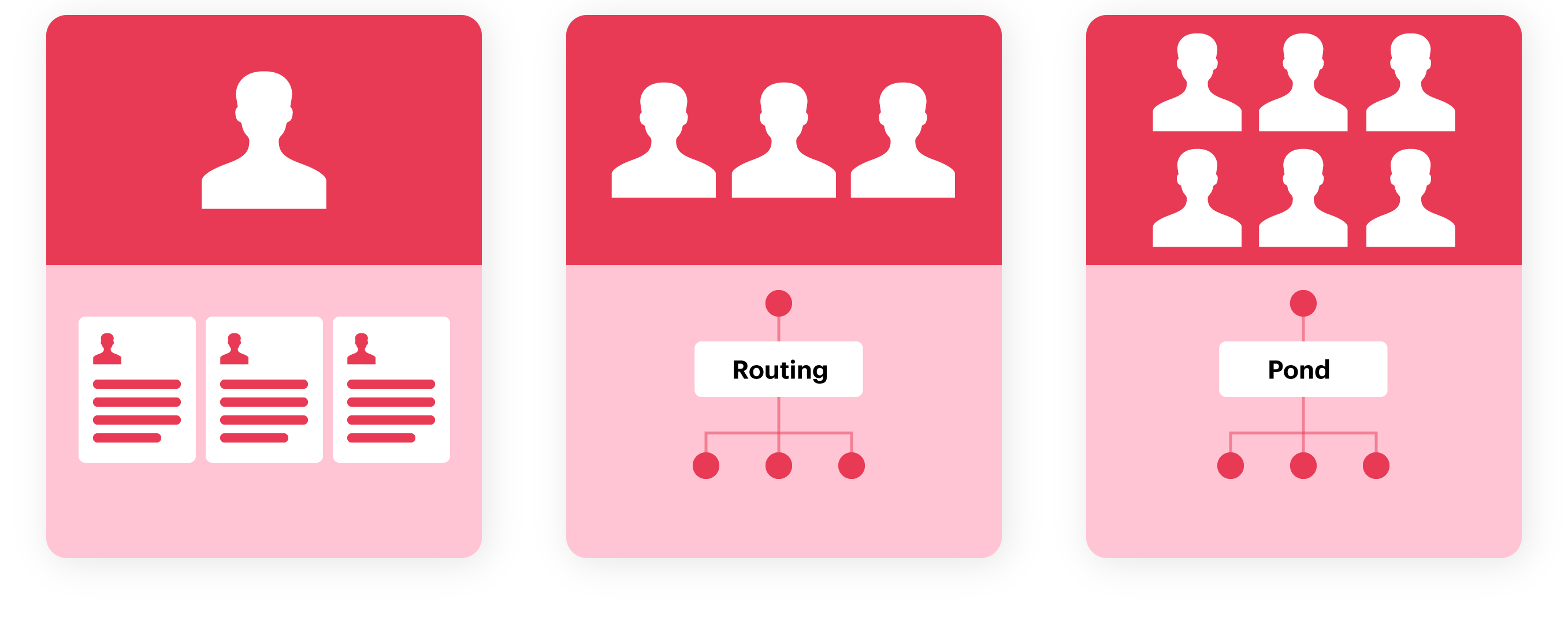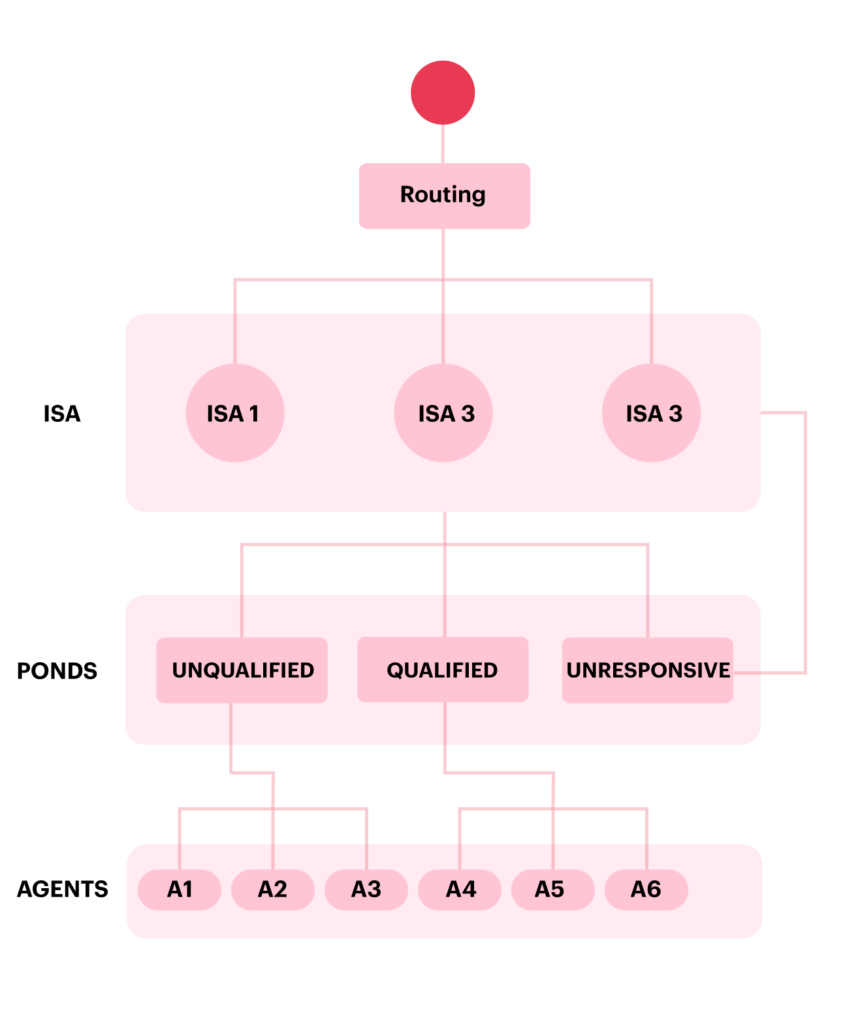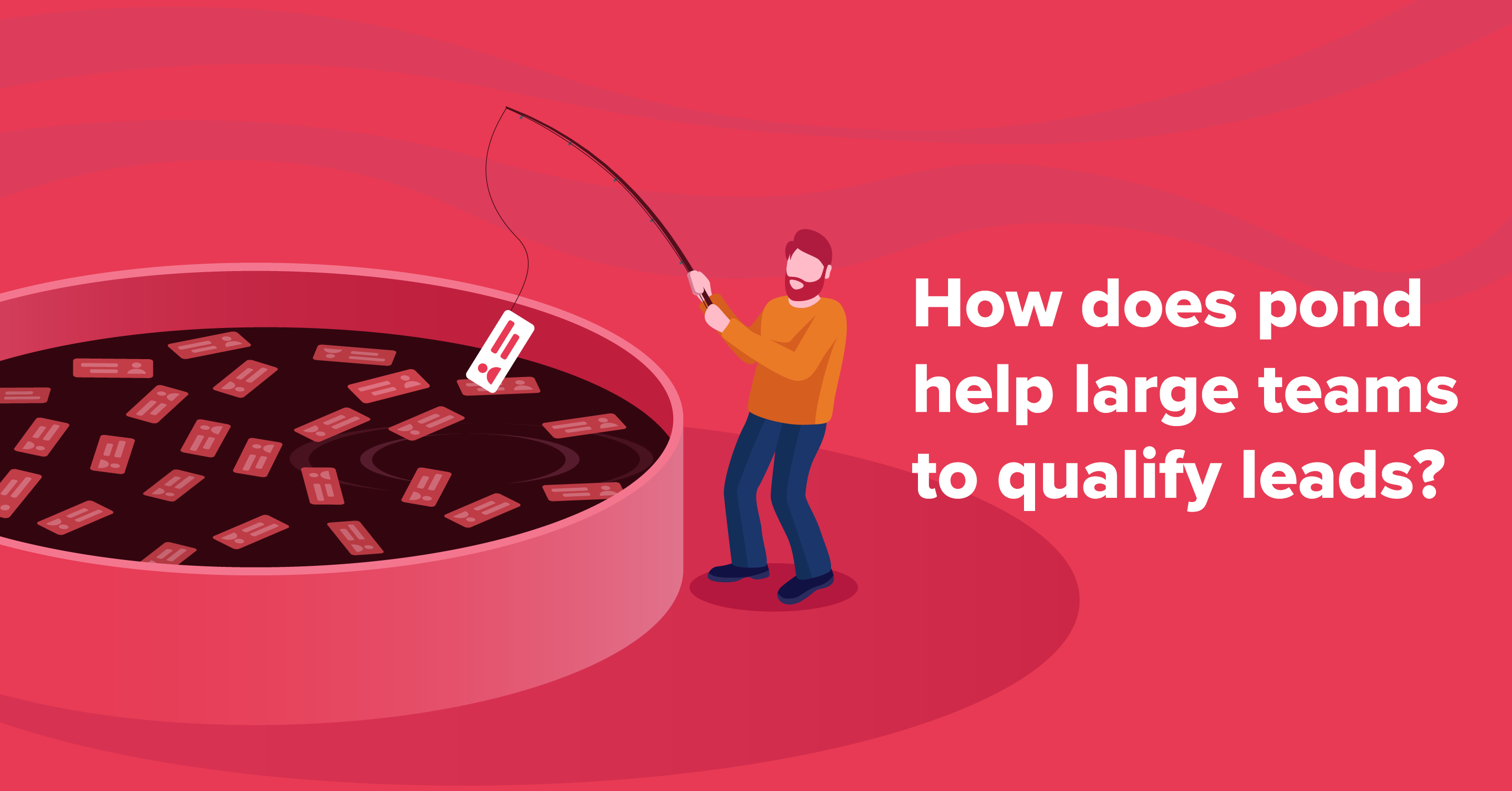
Have you ever used ponds to manage your real estate leads? This post gives you a detailed account of the importance of ponds. Keep reading!
Ponds are one of the popular ways of lead used by large real estate companies or brokerages to qualify unattended leads.
If no follow up happens on a lead it ultimately ends up in the pond. All agents who are a part of the pond are then notified to follow up and qualify the lead.
While the above description bout ponds will resonate with a lot of agents, a lot of CRMs in the market offer highly advanced features in the ponds that go well beyond qualifying unattended leads.
These products not only qualify left out leads but also help in the segmentation of leads, reassigning unattended leads, measure agent’s activity within ponds, and so on. As a result, a lot of confusion lingers on what lead ponds really are and what is the ideal way to utilize them.
In this post, we will demonstrate when are ponds useful for your business and how to use them to maximize your follow up and conversion rate. We will also discuss some major pros and cons of lead ponds in the end.
Are ponds right for your team?
In real estate, we end up fundamentally with 3 types of teams These are single agent teams, teams with less than 5 members and teams with more than 5 members. We must first evaluate the applicability of ponds for these teams and then decide if they are worth investing our time.

Single Agent. Single agent teams set their own priorities. Leads are manually qualified by the agent. You do not need much automation here to focus on lost leads. Since the lead volume is low, the probability of missing a lead is almost zero. Hence, there is no need of routing leads or using ponds here.
Small team with less than 5 members. Small team with less than 5 agents may apply some basic logic to route leads. However, it is manually configured within the systems by the members. Lead numbers are manageable here as well and this is why ponds do not find much application.
Team with more than 5 members. Large Teams with more than 5 members can qualify and convert leads with respect to stages in the pipeline. In fact, large teams divide themselves into clusters. Each cluster then focuses on one part of the lead pipeline. Here lead routing can be based on these stages and be automated using ponds.
Large teams generate hundreds of leads every month and it is very much possible that a lot of leads may be missed at the first go. Ponds can come into the picture here and prevent that from happening by routing the lead in the meantime.
How to use Ponds effectively?
You can create three types of lead pond with respect to the qualification status of the lead. These are “qualified”, “unqualified”, and unresponsive. The first line of interaction can be carried out by the ISAs to segregate the leads and place them into one of the three lead ponds mentioned above.

The leads that end up in the unresponsive pond are eventually sent back to the ISAs for another qualification attempt. On the other side, you can create two groups of agents and assign them the lead ponds for unqualified and qualified leads. This way all the leads that enter your system are attended or routed back if they are not.
While Ponds may be quite effective in routing leads and help you configure a lead follow up framework, they have their own share of disadvantages. Since the success of ponds is based on team size and use cases, it is important for you to look at the pros and cons to decide if you must use ponds or some other way to routing leads.
Pros and Cons of Lead Ponds
Pros:
Accountability. Ponds allows you to involve all agents and ISAs in your team and track their follow up activity over time. You can easily refer to the lead ponds to find out how engaged and effective your team really to convert leads.
Attention. Ponds are clubbed with notifications in CRMs. You can set custom alerts for your team members to instantly capture their attention to maintain speed to lead.
Focus on Relevant Leads. Using Ponds you can assign leads to agents with respect to their experience thus increasing the probability of successful follow up and conversion.
Segmentation Based on Marketing and Sales. A lot of real estate companies work with respect to the sales funnel. They put senior agents at the bottom of the funnel to handle sales driven transactions while the ones with lesser experience qualify the leads over a period of time. This is easily enabled and simplified by ponds, making it an effective segmentation tool.
Cons:
Ponds can be Confusing. Ponds may be effective in routing and segmenting leads but they can become confusing to manage. If there are two or more than two agents in a pond, all of them will receive a notification for an incoming lead. It becomes a little awkward when two people compete for the same lead and only one could get their hands on it.
Complicated. Ponds could become quite confusing with all the segments and your ability to assign or not assign those to certain agents. An agent may end up receiving less number of leads if you are too fixated on routing relevant leads to relevant agents. Consequently, you may end up with a lot of dissatisfied team members.
Lead ponds do not hold much importance for small scale team. However, larger teams may employ them as a tool for gatekeeping real estate leads while deriving some benefits in the form of segmentation and routing.
 Aiva
Aiva




